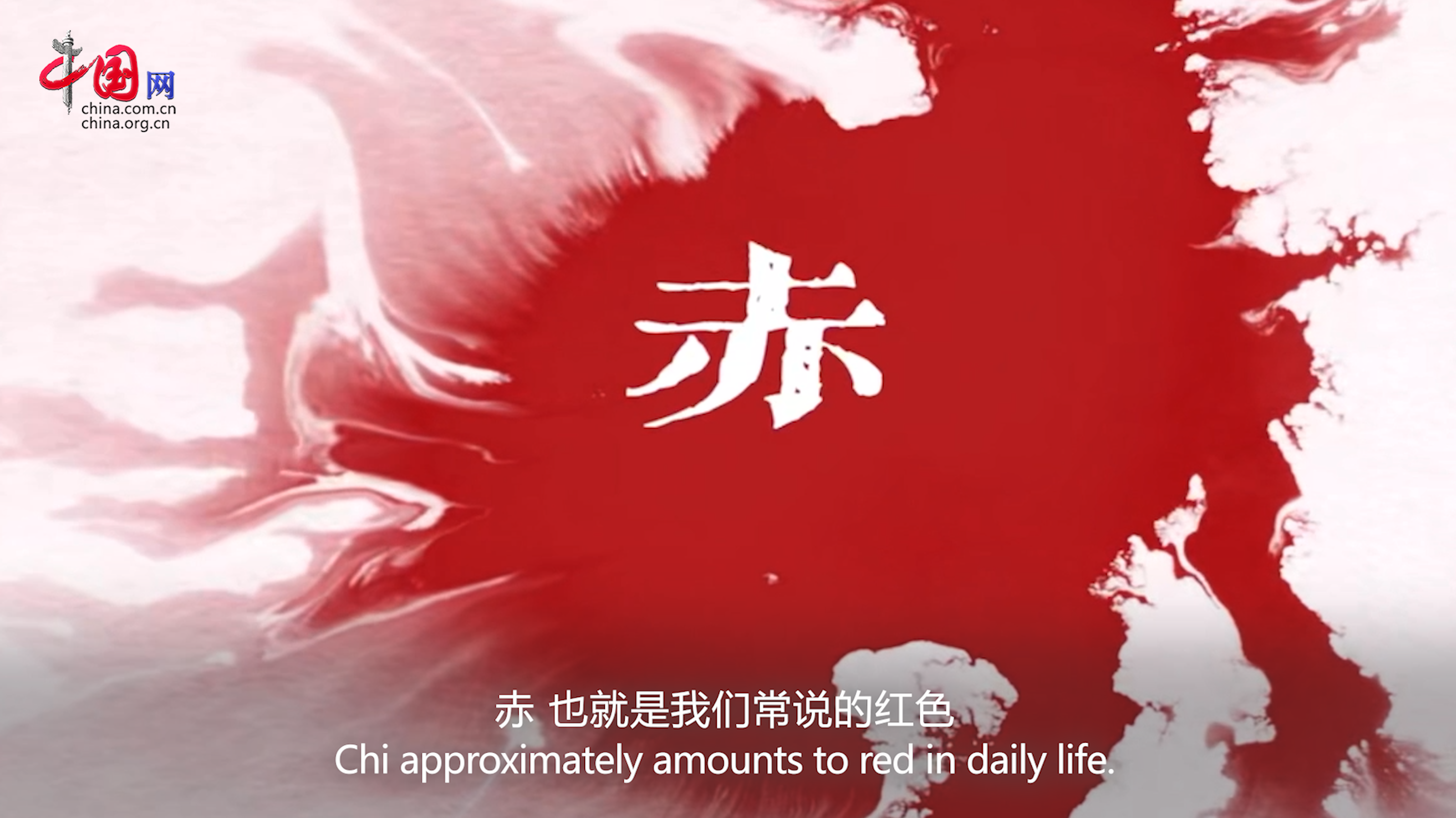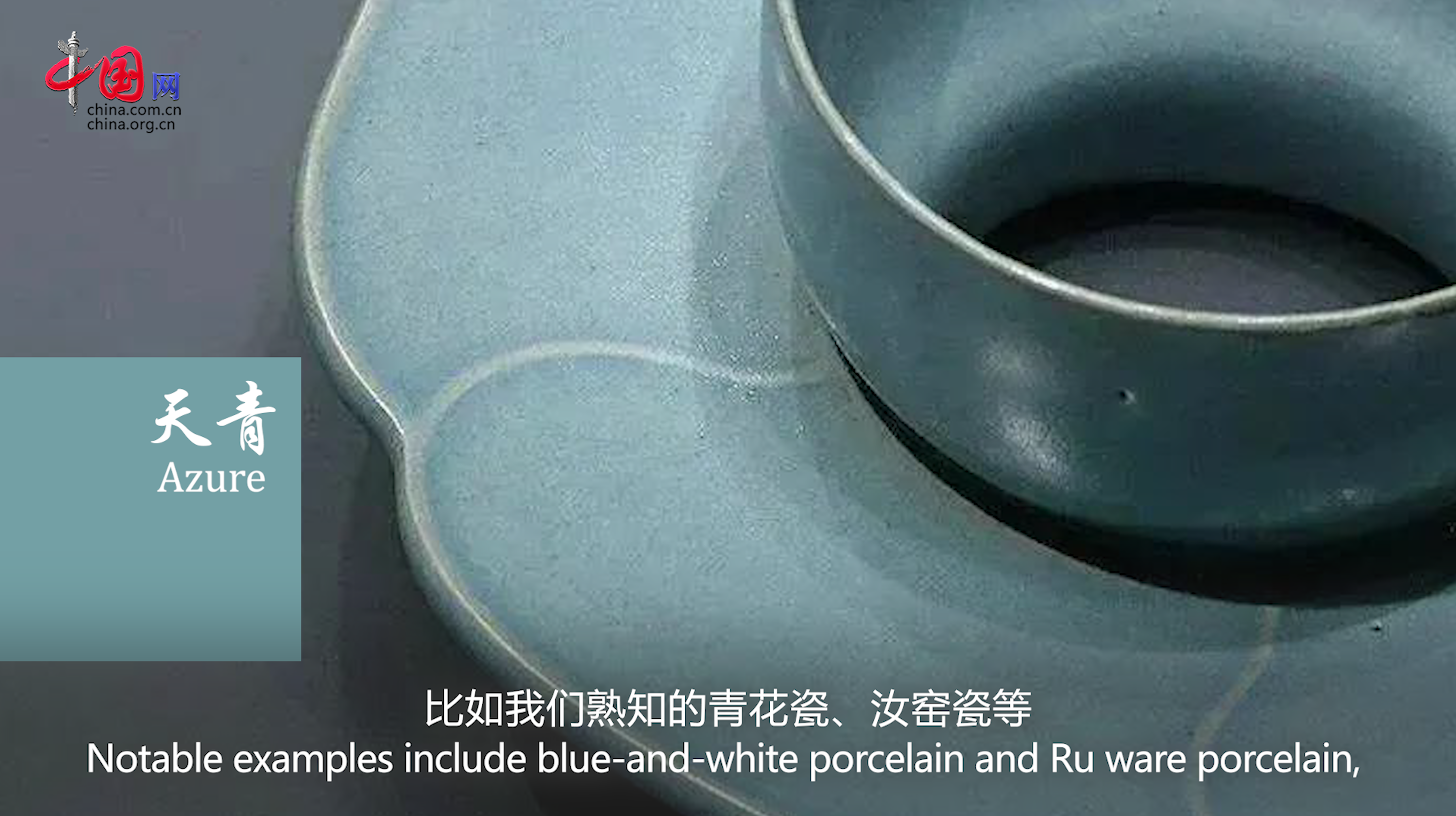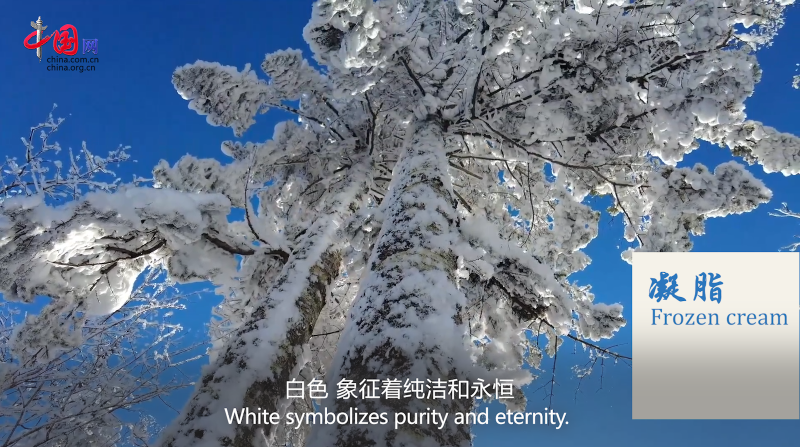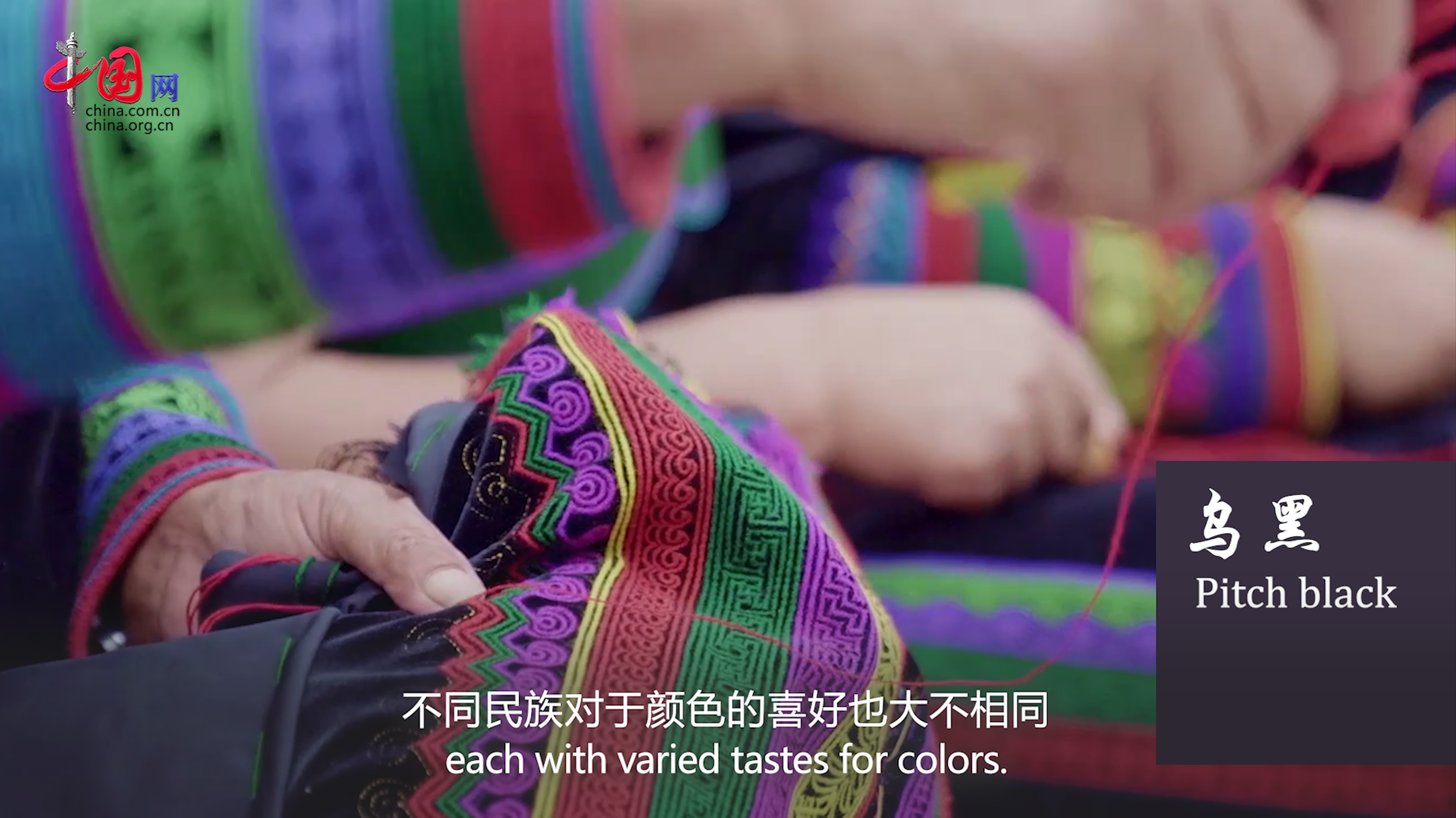中國傳統色:中國人的“好色”基因
你知道中國有多少種顏色嗎?中國傳統色説多也多,説少也少,赤、白、黃、青、黑是中國傳統五色,五色之變,變幻萬千,今天,我們就來聊一聊這五色。
Do you know how many colors are there in China? There are both few and many. Atotal of just five colors are viewed as standard colors in traditional Chinese culture, butfrom these a multitude of variations can be derived. Today, let’s explore thesefive basic colors.

赤,也就是我們常説的紅色。丹宸、絳雪、朱漆......這滿載著萬千氣象的紅,可以説是故宮最迷人的底色。
故宮博物院也是世界上收藏漆器最豐富的博物館,漆器的代表色之一就是朱色。來聽幾個中文詞語:丹宸永固、朱紅常在、赤心未改,這些詞語裏其實都有“紅色”,詮釋的就是中國紅的精神內涵——富有持久的生命力。
Chiapproximately amounts to red in daily life. It is extensively adopted in the architecture, artifacts, and naming of structures in theForbidden City. Therefore, red isthe most captivating primer of thisunparalleled cultural heritage.
The Palace Museum, administrator of the Forbidden City, owns the world’s largest collection of lacquer ware, and red is one of the representative colors of these treasures. Red-related colors are also recurrent in numerous Chinese words and idioms: Everlasting splendor of the crimson palace, the enduring vermillion, the immutable scarlet heart. All of these serve as footnotes to the cultural connotationof red in China: everlasting vigor.

“青,取之於藍,而青於藍。”這是古人在傳統染料提取過程中總結的經驗,意思是,靛青是從藍草中提取的,又能夠染出更濃艷的藍色。這種綠色和藍色的交相呼應,在中國名畫《千里江山圖》中體現得更為明顯,石綠、石青作為主色調,一幅青山綠水便映入眼簾。
除了在染料、國畫之外,青色在瓷器上使用也極其廣泛,比如我們熟知的青花瓷、汝窯瓷等,呈現出的素凈、清雅之感備受大家喜歡。
“Qing, derived from blue, yetexcels blue.” This idiom refers tothe experience from dye producing by our ancestors. It means that, Dianqing, or indigo dye,comes from the bluegrass, but can add a color of even deeper tone than the grass itself. The color Qing, a mixture of green and blue, finds perfect interpretation in the masterpiece painting A Thousand Li of Riversand Mountains, where malachite green and azurite blue serve as the primary colors, presenting a panorama of resplendentlandscape.
Apart from dyes and paintings, the color Qingis also widely applied in porcelain-making. Notable examples include blue-and-white porcelain and Ru ware porcelain, whose understated and elegant styles have impressed numerous people.

黃色,在中國傳統美學中,是最具神秘又充滿活力的顏色,象徵著高貴、光輝、權力......是太陽的顏色,也常常被人們聯想到金。
出土于四川成都金沙遺址的太陽神鳥金飾,距今已有三千多年,由四隻相同朝向逆時針飛行的鳥組成,含金量高達94.2%,厚度僅為0.3毫米,成為中國文化遺産標誌。如今,太陽神鳥的圖案散佈在成都的大街小巷,凝聚著這座城的人文氣息,承載著人們對自由、美好和團結的嚮往。
In traditional Chinese aesthetics, yellow is consideredthe most mysticalyet vibrant. It represents nobility, glory and power. It is the color of the sun, and often evokesgold.
Unearthed from the Jinsha site in Chengdu, Sichuan Province, the Sun and Immortal Birds Gold Ornamentdates back over three millennia. It features four identical birds flying counterclockwise around the sun. The ornament is 94.2% pure gold and merely 0.3-millimeterthink. Ithas become an icon for the Chinese cultural heritage. Today, the pattern of this ornament is seen all acrossChengdu. A crystallizationof the cultural characterof the city, it symbolizes the people’s pursuit for freedom, beauty and unity.

沉靜的東方,白雪皚皚,冰城哈爾濱被厚厚的積雪包裹,隨處可見各式各樣的雪雕,人們滑雪、溜冰、賞冰燈......歡愉聲中用熱情點燃寒冷。白色,象徵著純潔和永恒,冬天的哈爾濱就像一座白色城堡,充滿著浪漫的氣息。
但浪漫遠不止於此,哈爾濱的城市之花是丁香花,丁香花多以白色、紫色為主,當春意襲來之時,滿城的丁香盛開,雪花轉瞬變成花朵,從冬到夏,白色浪漫似乎一直都在。
In the tranquil northeast of China, the ice city Harbin is wrapped ina thick carpetof snow in winter. Ice and snow sculptures, in all their shapes and forms, adorn every corner of the streets. People go skiing, skating, and visitice lantern shows. A chorus ofcheerful sounds light up the coldnesswith passion. White symbolizes purity and eternity. Like a pure white castle, Harbin in winter isimbued with romantic aura.
This romanticism doesn’t stop whenwinter ends. Lilac, the city flower of Harbin,mainly comes inwhite or purple. In spring, the city is blanketed by lilac, as though the snowflakes have suddenly turned into panicles of white flowers, extending the romantic aura well into summertime.

中國是一個多民族的國家,不同民族對於顏色的喜好也大不相同,少數民族彝族就崇尚黑色,根源在於彝族先民熱愛黑土、欽慕黑鷹、敬畏黑虎。演變到服飾中,彝族男子的傳統服飾全身皆黑,給人以莊嚴、高貴之感。在彝族人心裏,黑色是最具有無限可能的顏色,給予人們無窮的力量。
China is composed of multiple ethnic groups, each withvaried tastes for colors. The people of the Yi ethnicity, for instance, takeblack as favourite color. This reverencecomes from their love for the black soil, respect for the black eagle, and awe for the mythical Black Tiger. The traditional costume for males of theYi ethnicity is full black, creating a sense of solemnity and nobility. In the eye of the Yi people, black is the most promising and empowering color.

中國傳統五色,相融相生,包羅萬象,四季、草木、建築、服飾、文化等皆因顏色而多彩。我們在色彩世界裏感知和尋覓,也透過色彩來表達我們對世界的認知和理解。中國傳統色,遠不止於此......
The five traditional colors in Chinese culture form an organic and all-encompassing whole. They give life and vigor to everything, from the seasons to plants in nature, and from architecture to costumes in our culture. Through the lens ofcolors, we perceive and explore the world; through the language of colors, we express our ideas and understanding of the world. The story about Chinese traditional colors goes far beyond here...









